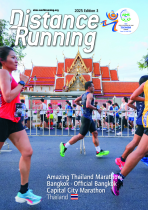AIMS Congress
01 June 2014, 10am UTC
20th World Congress, Durban, South Africa
h4. Official Congress Photos
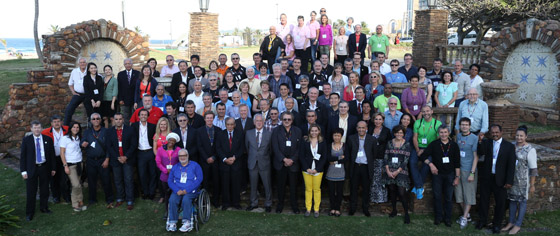
Right-Click here to download photo

Right-Click here to download photo
Front Row: Blanche Moila and Alan Lucas Hattingh (Comrades)
Front row, standing: Peter McLean (AIMS PR Manager), Guillermo Saenz (Costa Rica), Irene Peralta (CAF-Caracas), unknown, Rachid Ben Meziane (Leiden), Edouard Cassingnol (Paris), Fran Seton (AIMS Continental PR Manager), Antonio Agostino (St Denis – La Voie Royale), Hugh Jones (AIMS Secretary), Hiroaki Chosa (AIMS President Emeritus), Paco Borao (AIMS President), Jack Cohen (Tiberias, in check shirt), Al Boka (AIMS Treasurer), Keisuke Sawaki (retiring Board member), Martha Morales (AIMS Vice-President), Shi Chunjian (Chinese Federation), Mohamed Laroug (Boujaia Half Marathon), Myrta Doldan (Asuncion), Cheryl Winn (LOC), Gloria Ng (Kuala Lumpur), Gunther Ernst (Three Countries, in green T-shirt), Richard Umberg (Jungfrau), unknown, Mr/Ms Thilak Weerasinghe (Colombo)
Second Row: unknown (in red shirt), Bruno Boukobza (St-Germain 10km), Dave Cundy (AIMS Vice-President), Uri Menachem (Jerusalem), Marty Wanless (Allsport Marketing), Bruno Lafranchi (Zurich), Pannios Dimakos (Athens), Yutaka Sasai (Asics), Teruyoshi Yukimura (Lake Saroma), Sean Wallace-Jones (IAAF Road Running Manager), unknown, Dawei Wang (Chinese Federation), Fernando Jamarne (Santiago), unknown (with deep red tie), Giovanna Rousseau (Seychelles), 3 unknown, all Seychelles, Horst Milde (AIMS Marathoneum, Berlin).
Third Row: unknown, Junfang (Shirley) Huang (Xiamen), Rafael Acosta (WB10km, in striped tie), Inge Johnson (Canada Running Series), unknown (in blue T-shirt), unknown, unknown (in white T-shirt), Alan Brookes (in sunglasses, Canada Running Series), Natascha De Jager (ASA), Karin Wright (Lake Tahoe), Les Wright (Lake Tahoe), Alessandra Ramella Pairin (Turin), Ruth Ralston, Jim Ralston (Goodlife Toronto Marathon), Konstantin Podbelsky (Siberian), Nicholas Stalfors (Goteborgsvarvet), Arpad Kocsis (Budapest), Frank Stebner (Vancouver Sun Run), Karen Warrendorf (Okanagan), Steve Mattina (Okanagan), Debbie Harrison (Victoria Falls), Mark Milde (Berlin), Stephanie Schultzen (Two Oceans) ? Meissner (Pole Position), Theo Livitsanos (AIMS Administrator), – remaining of this row unknown
4th Row: Andrea Eby (Vancouver), Markus Herrman (RunCzech), unknown, Mitsugi Ogata (Fukuoka), Pablo Gonzales (Quito Ultimas Noticias), unknown, Carlo Capalbo (RunCzech), Pieter de Jager (ASA), Johan Van Staden (Mandela Day Marathon) behind: Vivek Singh (Mumbai,) John Hall (Maritzburg), Eileen Hall (Maritzburg), 2 unknown from Maritzburg, Luis Posso (Possosports, at back), Elana Meyer (Cape Town), Renna Jarvalt (Tallinn), Sabine Milde (AIMS Marathoneum, Berlin), Dejan Nikolic (Belgrade), unknown (Seychelles).
At the 20th World Congress of AIMS held in Durban, South Africa from 29-31 May AIMS President Paco Borao reported that the running movement is booming around the world with an estimated 10 million people taking up the challenge to run the marathon and other long distance races. President Borao commented: ‘We are seeing a great growth in the running movement. Running, the world’s original and most affordable sport, is a perfect solution to addressing many of the world’s health issues such as obesity. As many medical professionals around the world like to say: ‘exercise is the perfect pill.’
The World Congress was held in conjunction with South Africa’s famous Comrades Marathon that starts in Pietermaritzburg and finishes some 89km later in the City of Durban. The race’s history goes back to a soldier named Vic Clapham in 1921 who, after World War I urged that the race be staged to celebrate the spirit of fallen comrades in all such human conflicts.
Athletic performance: ‘it’s the brain that is the critical organ’.
World renowned sports scientist Professor Tim Noakes told the Congress about his lifetime of research into athletic performance. He highlighted that the history of the majority of the world’s top sprinters originate from West Africa and this is consistent with sprinters now representing the Americas having mainly West African ancestry. While the greatest success in distance races, in events like the marathon, comes from East Africa.
Professor Noakes showed the Congress considerable research into what allows East African runners to dominate the marathon and distance running throughout
the world. He argued that many factors combine to give the runners, who originate from the East African Rift Valley, claimed to be the site of the origins of man, a physical, environmental and psychological advantage.
While there do appear to be genetic variables compared to a sample of white native European athletes, they do not explain all the factors. In general European athletes tend to be taller with greater muscle weight. The East Africans were generally smaller and lighter but with considerable muscle strength and power.
Prof. Noakes explained that the less time a runner’s foot is in contact with the ground (and the more it is in the air) the faster the runner will move. To propel the athlete into the air for longer, having less time in contact with the ground, requires great muscle strength. The phenomenal Ethiopian runner Haile Gebrselassie was highlighted as an example. Prof. Noakes said although appearing slight in frame, Gebrselassie’s muscle strength would compare to that of a weightlifter of substantially more body mass.
There was a clear correlation between successful African distance runners and those who from an early age ran to school and back each day.1992 New York Marathon winner Willie Mtolo, who also spoke at the Conference, told of how he ran 32km every day of his childhood to school and back.
Living and running at altitude also provides a great advantage when coming down to compete at sea level. The desire for economic success was also shown to be a major motivating factor for many African runners.
Prof. Noakes also talked about ‘stereotype threat’. Many runners are believed to be intimidated before the race even starts by the perceived prowess of African distance runners, the legend and history of excellence being so strong that this gives them a competitive advantage over other runners: Brazilian Footballer, French Chef, African Marathon Runner.
Overall Prof. Noakes said that physiology can only explain so much. The ultimate factor is how the brain influences the body, both in how it informs and manages our physical body responses but also our mental desire and motivation. He quoted the great Sir Roger Bannister, who broke the 4-minute mile on the 6 May 1954, when asked what is the critical factor of athletic performance, replied: ‘it’s the brain that is the critical organ’.
The race directors from around the world also heard from Blanche Moila, the first black woman to be given South Africa sporting colours, who was cheered on by the prisoners of Robben Island in the 1980s. Moila was and is an inspiration to all, but in particular to women and the black community especially at a time when South Africa was struggling for equality and democracy. Moila highlighted the need for strong female role models and greater support for women to see greater success in African and world athletics.
Olympic Silver medallist Elana Meyer talked of her frustrations at waiting for years during South Africa’s period of isolation from international sport during the apartheid era and her relief to finally get the chance to compete, and win a medal, at the 1992 Olympics.
The conference also heard from one of the world’s top athletes’ agents Luis Posso, of the need for race organisers and the media to promote the often inspirational stories behind the challenges that many African athletes have overcome. Such stories build a greater appreciation and awareness of their athletic and life success, as an inspiration to others. This year’s London Marathon debut Olympic hero Mo Farah was mentioned, with it being noted his fame is such that he has over 1m followers on twitter.
Cheryl Winn, The Chairperson of the Comrades Marathon LOC, beautifully summed up why running is historically important in Africa by quoting an old African saying:
‘Every morning when a gazelle wakes up in Africa, it knows that it must run faster than the fastest lion or it will be killed.
Every morning in Africa a lion wakes up. It knows it must outrun the slowest gazelle or it will starve to death.
It doesn’t matter whether you are a lion or a gazelle.
When the sun comes up in Africa you better be running.’
2014 AIMS Board

Back row Left to Right: Gary Boshoff, Fernando Jamarne, Bruno Boukobza, Andrea Eby, Mitsugi Ogata, Mark Milde. Front row Left to Right: Al Boka, Martha Morales, Paco Borao, Dave Cundy, Hugh Jones (Right-Click here to download photo)
Photo copyright: Francis Kay of AIMS’ sponsor: marathon-photos.com
Election success
The Congress saw the following people elected:
- President: Paco Borao (Valencia Marathon-Spain)
- Vice President: Martha Morales (Marathon International Tangamanga-Mexico)
- Treasurer: Al Boka (Las Vegas Marathon, USA)
- Director: Andrea Eby (Vancouver Marathon-Canada)
- Director: Fernando Jamarne (Marathon de Santiago-Chile)
- Director: Mistugi Ogata, Ph.D. (Fukuoka Marathon-Japan)

Paco Borao – President
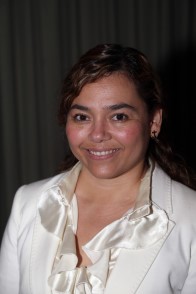




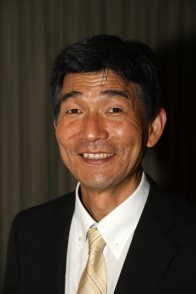
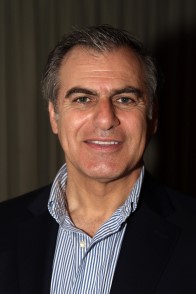
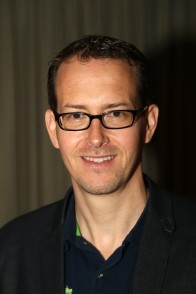
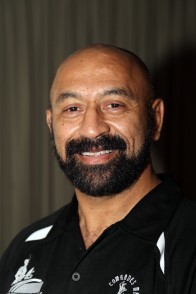

All Photos above copyright: Francis Kay of AIMS’ sponsor:






